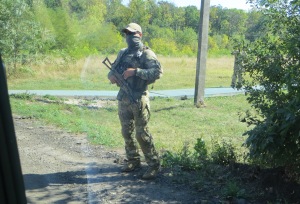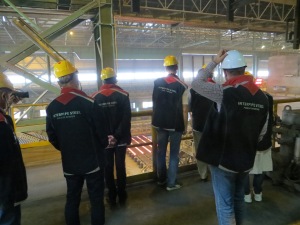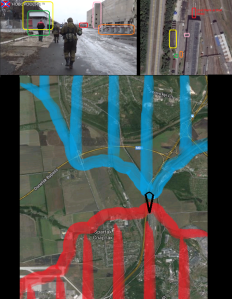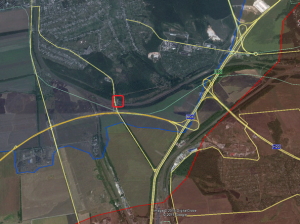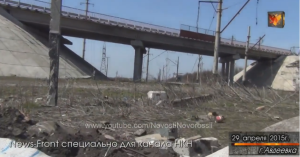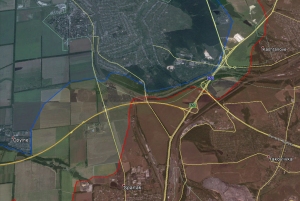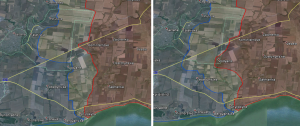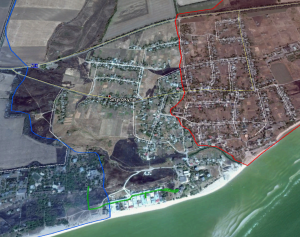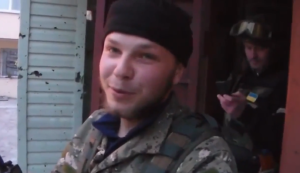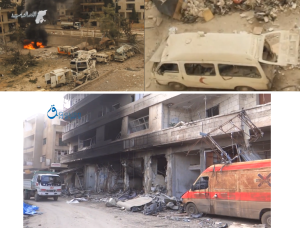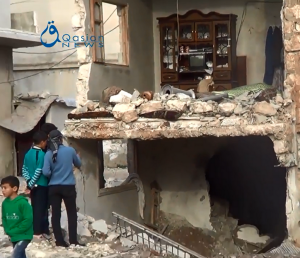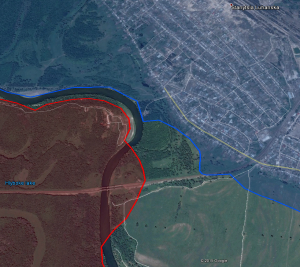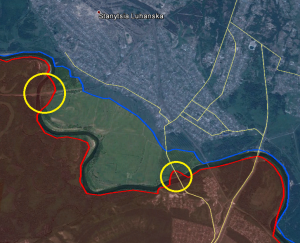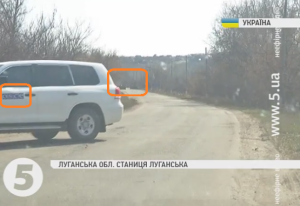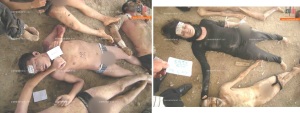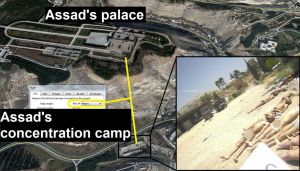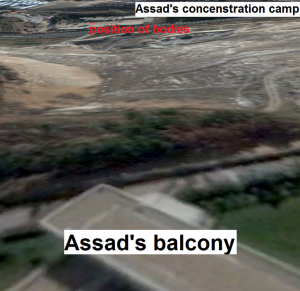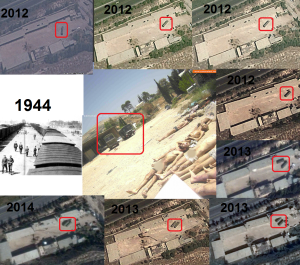Seit acht Jahren tobt der Krieg in Syrien. Ein Krieg, der nach jüngsten Angaben etwa 560.000 Menschen getötet und mehr als elf Millionen vertrieben hat, die Hälfte davon ins Ausland und knapp eine halbe Million nach Deutschland.
Trotzdem sitzt Diktator Baschar al-Assad heute fester im Sattel als je zuvor, kontrolliert etwa 65 Prozent Syriens und hat auch mit den oppositionsnahen Mächten, vor allem der Türkei, Übereinkünfte getroffen, die seinen Machtanspruch festigen. Die Gründe dafür sind vielfältig.
Der friedliche Aufstand – Ab März 2011 sah sich Syriens Machthaber im Rahmen der Unruhen des „Arabischen Frühlings“ Massendemonstrationen in nahezu allen Landesteilen gegenüber. Bis zu 500.000 Menschen an einem einzigen Tag gingen mit dem Slogan „Das Volk will den Sturz des Regimes“ auf die Straße. Ziele der Protestierenden war die Absetzung des Diktators, der sein Amt im Jahr 2000 von seinem Vater übernommen hatte, sowie die Einleitung demokratischer Reformen in Syrien.
Widerstand formiert sich – Assad reagierte mit brutaler Gewalt. Binnen weniger Monate wurden mehr als 5.000 Demonstranten getötet. Nächtliche Razzien brachten Zehntausende weitere in Assads Foltergefängnisse, aus denen es nur wenige wieder herausschafften. Doch der Diktator hatte den Bogen überspannt. Große Teile seiner Armee verweigerten ihm aufgrund der Brutalität gegen sein eigenes Volk die Treue und schlossen sich zur „Freien Syrischen Armee“ zusammen. Diese sollte die Demonstranten schützen und Syrien vom Joch Assads befreien. Bereits nach wenigen Monaten schickten mehrere Golfstaaten sowie einige europäische Länder Waffen, damit die „FSA“ eine Chance gegen Assads Militär bekomme.
Islamisten als Rettung – Dieser reagierte mit einem bis dahin einzigartigen Schritt. Ab Mitte 2011 entließ Assad die extremsten Islamisten aus seinen Gefängnissen, damit diese die bis dato moderaten Rebellen infiltrieren und Blutbäder unter Assad-treuen Bürgern anrichten sollten. Zwischen 1500 und 2000 Dschihadisten wurden dafür freigelassen. Die Propaganda des Regimes, man kämpfe gegen islamistische Terroristen, wurde vom Regime selbst in die Tat umgesetzt und verfehlte sein Wirkung nicht.
Im Januar 2012, fast ein Jahr nach Beginn der Unruhen, gründete sich der syrische Ableger von Al-Qaida, namens Jabhat al-Nusra. Islamisten aus der ganzen Welt strömen nach Syrien, um sich den Terroristen anzuschließen. Gut ein Jahr später kommt es zum Bruch innerhalb der Terrorgruppen und der „Islamischer Staat“ gründet sich als globales Alternativprojekt zu Jabhat al-Nusra.
Assad vor dem Aus – Mitte 2013, zwei Jahre nach Beginn des Krieges, hatte das syrische Regime die Kontrolle über etwa 80 Prozent der Fläche Syriens verloren. Dies werden nun von – noch(!) überwiegend moderaten – sunnitische Rebellen und kurdische Aufständischen kontrolliert. Der Diktator reagiert, verstärkt seine Armee durch sektarische Milizen, setzt unermüdlich Fassbomben gegen sein Volk ein und nutzt bei Damaskus Nervengas. 1300 Menschen sterben.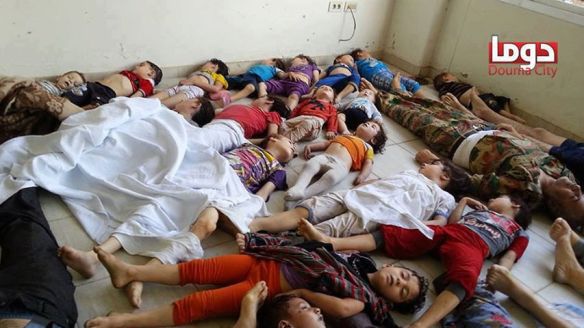
Obwohl US-Präsident Obamas „rote Linie“ überschritten wird, kommt es zu keiner militärischen Reaktion des Westens. Der Startschuss für die Wende im Syrien-Krieg. Denn durch das Nichtstun der zivilisierten Welt fühlen sich Assads Unterstützer gestärkt, zunächst die vom Iran unterstützte Terrororganisation Hisbollah und der Iran selbst. Beide schicken, wie auch Russland, Waffen und Tausende Kämpfer, um den Diktator zu unterstützen.
Russland greift ein – Dennoch reicht diese Unterstützung nicht, um die Lage zu stabilisieren. Zwar gelingt es Assad und seinen Verbündeten die Stadt Homs zurückzuerobern. Im Osten Syriens verliert man jedoch immer mehr Gebiete an ISIS und im Mai 2015 schließlich die komplette Kontrolle über die Region Idlib in Nordwesten des Landes. Rebellen gelingt es, bis ans Mittelmeer vorzustoßen und die alawitischen Kerngebiete in den Provinzen Latakia und Tartus direkt zu bedrohen. Dies bringt das Fass für Assads Unterstützer Wladimir Putin zum Überlaufen, nicht zuletzt, weil Russland eine Marine-Basis in Tartus betreibt – seine einzige am Mittelmeer.
Am 30. September 2015 beginnt Russland seine Luftschlag-Kampagne an der Seite Assads. Bereits am ersten Tag zeichnet sich ab, was die kommenden Jahre bringen sollen. Denn Russlands Luftwaffe greift nicht etwa gezielt Islamisten an, sondern betreibt eine beispiellose Kampagne des verbrannten Erde. Schulen, Krankenhäuser, Wasseraufbereitungsanlagen, Getreidesilos und Wohngebiete werden systematisch dem Erdboden gleichgemacht. Bis 2018 sollen mehr als 7000 Zivilisten bei diesen Angriffen sterben.
Und Russlands Bomben zeigen Wirkung. Im Dezember 2016 gelingt Assads Armee, zusammen mit iranischen Milizen und russischer Luftunterstützung die Eroberung Aleppos. Erst danach wendet man sich erstmals ernsthaft ISIS zu. Ende 2017 beginnt man erfolgreiche Feldzüge in Hama und Idlib, 2018 wird unter extremer Gewalt (abermals über 2500 tote Zivilisten) Ost-Ghouta erobert und Mitte letzten Jahres fallen die Regionen Quneitra und Daraa komplett zurück an Assad.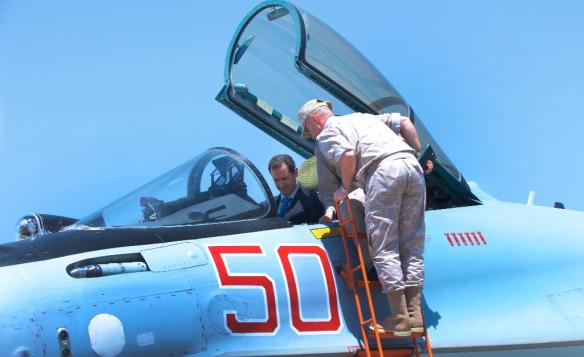
Die Rolle des Westens – Der Westen steht bei all dem nur an der Seitenlinie. Die Militärkampagne der USA, die seit Ende 2015 auch von Deutschland und anderen europäischen Staaten unterstützt wird, richtet sich ausschließlich gegen die Terrormiliz ISIS, was Assad zusätzliche Entlastung gibt. Selbst bei schlimmsten Menschenrechtsverletzungen durch das syrische Regime und Russlands Luftwaffe belassen es die deutschen Außenminister bei Beleidsbekundungen und allenfalls zahnlosen Verurteilungen.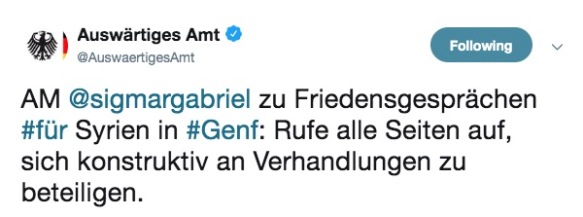
Auch von Russland propagandistisch unterstützte neue Giftgasangriffe Assads 2017 und 2018 führen nicht zu Sanktionen gegen Moskau. Immerhin: US-Präsident Donald Trump lässt jedes Mal eine Nacht lang Militäreinrichtungen Assads als Bestrafung bombardieren. Militärisch ändert das nichts. Schlimmer noch: Im Dezember 2018 verkündet Trump den Rückzug der US-Truppen aus Syrien binnen weniger Monate – das Ende der kurdischen Autonomie im Land. Eine Entscheidung, die vor allem von jenen kritisiert wird, die jahrelang für eine „diplomatische Lösung“ in Syrien eintraten und dabei zusahen, wie der Konflikt vor Ort militärisch entschieden wurde.
Die Türkei beschließt 2017 und 2018 eigene Militäraktionen im Norden des Landes. Diese richten sich zunächst gegen ISIS und später gegen die kurdische Miliz YPG, die als syrischer Ableger der PKK gilt. Europa verurteilt vor allem die zweite Offensive, nachdem man sechs Jahre lang die Bitten der Türkei ignoriert hat, gemeinsam „Sicherheitszonen“ im Norden Syriens zu gründen, um die 3,5 Millionen syrische Flüchtlinge aus der Türkei zurück nach Syrien zu führen.
Assad – Sieger, aber politisch irrelevant – Auch politisch werden Europa, die USA und die Vereinten Nationen ausgehebelt beziehungsweise lassen sich widerstandslos aushebeln. Statt in Genf werden die Richtungsentscheidungen für Syrien seit Ende 2016, zuerst zaghaft, später mit aller Macht, im kasachischen Astana getroffen. Dort treffen sich die Führer der Türkei, des Irans und Russlands regelmäßig, um zu bestimmen, wie der Nachkriegskuchen in Syrien verteilt werden soll. Diktator Assad wird über die in Astana getroffenen Entscheidungen lediglich informiert. Der „Präsident“ Syriens hat den brutalsten Krieg des 21. Jahrhunderts nach acht Jahren Tod und Zerstörung nominell gewonnen. Praktisch genießt er jedoch lediglich Bleiberecht in eigenem Land und ist heute eine Marionette Moskaus und Teherans, die die eigentlichen Sieger in Syrien sind.

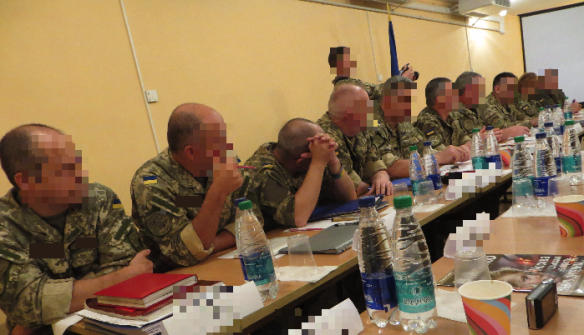

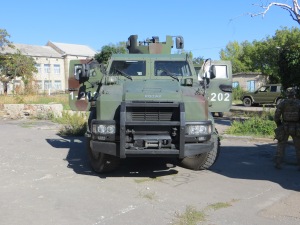
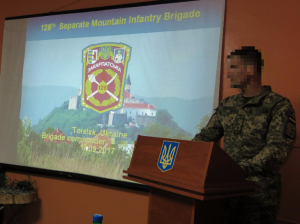 Briefing at the 128th Separate Mountain Infantry Brigade’s HQ in Toretsk
Briefing at the 128th Separate Mountain Infantry Brigade’s HQ in Toretsk